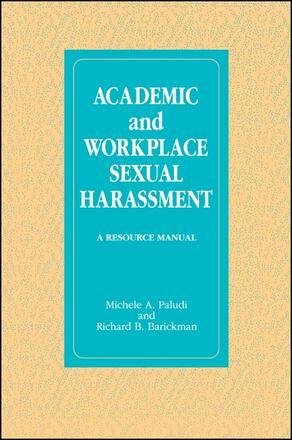
Academic and Workplace Sexual Harassment
A Resource Manual
Alternative formats available from:
Description
This book represents the first comprehensive resource manual for understanding and preventing sexual harassment in the academic community and in the workplace.
Studies indicate that sexual harassment is at epidemic proportions in the academy and in the workplace: from 30%–70% of women in U.S. colleges and universities experience some form of sexual harassment (including sexual assaults) each year; a University of Massachusetts study reports 13% of undergraduate women were raped by acquaintances; and 50% of women in the workplace report serious sexual harassment from supervisors and fellow employees. This manual provides the results of research and of practical, effective experience in reducing the occurrence of sexual harassment, investigating complaints, and providing counseling and remedies for the victims. In addition, the authors have compiled bibliographies, audio-visual material, and pedagogical techniques for dealing with sexual harassment in the academy and in the workplace, as well as information and workshop techniques to facilitate training programs.
Michele A. Paludi is Director of Women's Studies at Hunter College, and a developmental psychologist who specializes in women's achievement and career pathways. She is the editor of Ivory Power: Sexual Harassment on Campus, and author of Exploring/Teaching the Psychology of Women: A Manual of Resources both published by SUNY Press. Richard B. Barickman is Associate Professor in the Department of English at Hunter College where he helped to establish the Sexual Harassment Panel.